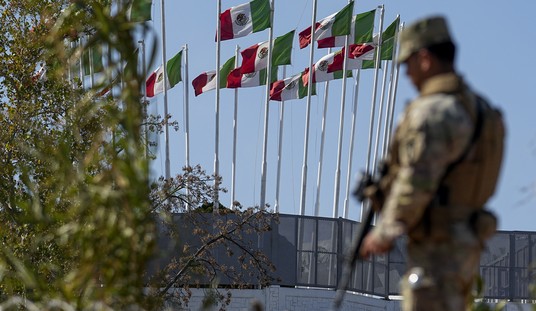Imagine a major story in one of America’s top newspapers on an island in San Francisco Bay named Alcatraz.
Now imagine that this story omits mentioning a prison.
What could conceivably account for such an “oversight?” Might the writer have an agenda? Might a “full-disclosure” of the writers’ background and family connections reveal such an agenda?
For tens of thousands of Americans an equivalent story was published in the Washington Post last week by its chief Latin American reporter Nick Miroff. The “in-depth” article featured an islet of the southwestern coast of Cuba called The Isle of Pines, which hosted the biggest prison/torture and forced- labor complex for political prisoners in the history of the Western Hemisphere.
Tens of thousands of American citizens of Cuban heritage had family members tortured there by Castro’s Stalinist regime. Some had their family members murdered there. Dozens of the surviving torture victims are U.S. citizens and live in the U.S. today. These heroes qualify as the longest-suffering political prisoners in modern history, having suffered prison camps, forced labor and torture chambers for a period three times as long in Castro’s Gulag as Alexander Solzhenitsyn suffered in Stalin’s (8 years.) Several of these prisoners are black Cubans who suffered longer in Castro’s prisons than Nelson Mandela spent in South Africa’s (27 years.) Their (genuinely) inspirational stories of survival against unimaginable odds during multi-decade terms of jail and torture in Castro’s Gulag all began at the Isle of Pines’ Presidio Modelo. Had they been victims of anyone but Castro their names and stories would be household knowledge worldwide via the MSM, Hollywood and the chat show circuit.
Recommended
One of these survivors of the Isle of Pines prison/torture system, Armando Valladares, even served as U.S. Ambassador to the UN Human Rights Commission from 1987-90. Hah! Just like Ronald Reagan to pull this stunt -- to use a real-live victim of the Evil Empire itself as an “in-your-face” tweak to that assembly of thugs, frauds and blowhards known as the United Nations Human Rights Commission. President Reagan also honored Ambassador Valladares with the Presidential “Citizens” Medal.
You’d really think such real-live witnesses (all U.S. citizens today) to a major feature of the island featured in the Washington Post would lend a nice “human-interest” quotient to their story.
Instead, no reader of the “in-depth” Washington Post story would have the slightest clue about any of the above items.
We can’t be certain why, but one sticking point might be that most of these victims were sent to Cuba’s Isle of Pines prison/torture/ forced-labor complex on the orders of the man who would become father-in-law to the Washington Post’s Nick Miroff, the author of the story on the Isle of Pines, whose wife remains an active apparatchik of Cuba’s Stalinist regime.
Outside the tiny Cuban-American informational ghetto almost nobody is aware of any of the above items. But here it is:
The Washington Post’s Latin American correspondent Nick Miroff is married to an academic apparatchik of the Castro regime named Camila Piniera Harnacker. She is the daughter of the founder of the Castro regime’s military intelligence and secret police services. This notorious KGB-protégé, Che Guevara-chum and Stalinist torturer was named Manuel “Barbarroja” Pineiro. Like so many others in such sensitive positions within Stalinist regimes (indeed, like Che Guevara himself!) Pineiro’s usefulness to his employers finally expired. In 1998 “Barbaroja” died in a mysterious “car-accident” in Havana. Most Cuba-watchers get a chuckle out of that one.
In contrast, the usefulness of Pineiro’s son-in-law as a propaganda operative for the Stalinist Castro regime continues.
Oh don’t get me wrong. Miroff does mention that the Presidio Modelo prison once situated on the Isle of Pines “was once Cuba’s most notorious penitentiary.” He even mentions a couple of the famous political prisoners.
The famous prisoners were Fidel and Raul Castro who were sent there after conviction for terrorism (by a completely independent judiciary, by the way) during the Batista administration. The Castros spent all of 14 months there in country club conditions. Think I exaggerate? Well, here’s Fidel Castro himself in a letter to a friend from the Isle of Pines Modelo Prison:
“I’m preparing to dine on spaghetti and squid, Italian candy for dessert, a cup of hot coffee and then an H. Upmann No. 4. When I sit outside in my shorts in the morning sun and the sea breeze, I think I’m on a beach and later in a restaurant. I feel I’m on vacation!” (Fidel Castro, Prison letters, April 10, 1955.)
Not that this letter features in Miroff’s story—and for obvious reasons. Still, the prison’s “notoriety,” according to Miroff’s brief mention of it, owed to the administrations of Cuban Presidents Gerardo Machado and Fulgencio Batista. Never mind that during these periods it contained a miniscule fraction of the prisoners as under Castro’s Stalinist regime. And never mind that Fidel Castro himself described its country-club conditions.
“He (Fidel Castro) shut down Presidio Modelo in 1966.” Is the sole mention of any connection between the Castro regime and its prison on the isle of Pines—again: the biggest prison/torture/forced labor complex in the history of the Western Hemisphere were upwards of 16,000 strictly political prisoners suffered almost unimaginable agonies.
The Washington Post’s Nick Miroff also “overlooked” an item that might have added an immensely dramatic quotient to his story. In spring of 1961, when the prison’s main building was crammed with upwards of 10,000 ill-fed and horribly mistreated political prisoners, Castro ordered tons of explosives placed under the main building. The plan was to blow it up and murder the 10,000 prisoners if (what came to be known as) the Bay of Pigs invasion showed any sign of succeeding.
Former U.S. ambassador to the UN Armando Valladares documents this attempted atrocity in his prison memoirs, Against All Hope. You’d think this positively Hitlerite (and fully-documented) datum would add some drama to the Washington Post’s story, right?
Hah! Nary a mention appears in the story. Manuel Pineiro was the Stalinist regime’s chief of interrogation-torture of political prisoners at this time, you see. That the atrocity was probably co-planned by Castro and The Washington Post writer’s future father-in-law might-- or might not-- have something to do with the curious omission of this sure-fire, attention-grabbing item.
What a fascinating “tell-all” the daughter of this torture–terror chieftain could provide American readers via a little “pillow-talk” to her husband, Nick Miroff of the Washington Post. His platform, after all, consists of one of the America’s—indeed the world’s-- most important newspapers.
Shall we hold our breaths?
























Join the conversation as a VIP Member